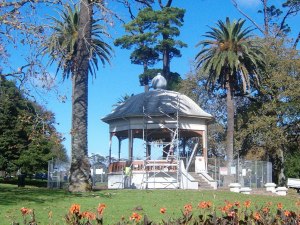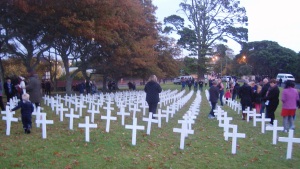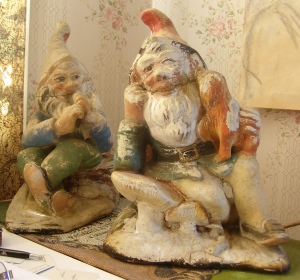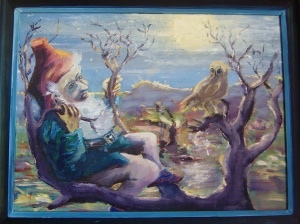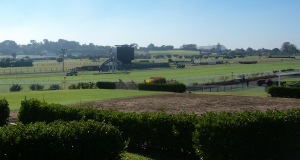What a perfect day to paint a big white wall. The view over Auckland and the harbour would have been superb today, hopefully enough to make up for the chilly start to the day. The windowless brick building in the foreground is the Kenneth Myer Building, home to the Gus Fisher Gallery in Shortland Street, central Auckland. http://www.nzmuseums.co.nz. One of New Zealand’s first radio stations, 1YA, broadcast out of this building which dates from 1934. Later it became a television studio: NZ’s first TV broadcast was from here on 1st June, 1960
EBOOKS and Calendars for 2015 coming 16th August to Auckland Independent Book Festival
See you there, 100 Victoria Road, Devonport, Auckland, 9am to 4pm. My stall is entitled “Italian Riviera inspired Ebooks” but I’ll also be promoting Dad’s books, ‘The Gentle Giants’ and ‘Blasts from the past’. And if you can’t make it, maybe you’d like to check out my ebooks and calendars on this blog. My ebooks are on Amazon.com for PC and Kindle and on CreateSpace.com in paperback format. My calendars are on Lulu.com




Tending the weather
Last week, even before winter had officially begun, Auckland woke up to its coldest day in 40 years. We know this fact thanks to weather stations like the one in Albert Park in the city centre. I was in the park on that remarkably cold day, and stopped to admire this gorgeous weather vane.
It is the centrepiece of a meteorological station that has stood on the highest point in the park since 1909. Albert Park was once the site of a fortified Maori Pa and in the 19th century an army barracks. In fact the army began recording the colony’s weather on this same site as early as 1854.
Another feature of Albert Park is the floral clock – dating from 1953: if it looks a little bit sparse it is because it had recently had its annual overhaul and replanting.
Albert Park lies between the grounds of Auckland University and the CBD so it hums, especially at lunchtime, with students and office and shop workers alike.
In spite of the cold, the fabulous cloudless sky had drawn the crowds to the park – to stroll, read, meditate, meet, and, around the onion-domed band rotunda, to enjoy a pop concert put on by university music students.
Nestling under a broad branched tree between the fountain and the band rotunda stands this delicate statue of Love breaking Hate’s sword. It is dedicated to 19th century Auckland journalist George M Reed and was erected in 1901, a few year after his death. Those haunting, oft-quoted lines by Reed’s fellow journalist George L Banks are engraved on its pedestal.
… for the future in the distance and the good that I can do.
The Domain – Auckland’s green heart
Auckland Domain is the city’s oldest park: created in the 1840s and covering three quarters of a square kilometre (185 acres), it is a pulsating green heart.
Much more than just flower beds, trees and open spaces it is as well an open book illustrating Auckland’s multi-faceted history. The Domain’s site is an extinct volcano, Pukekawa: when European settlers arrived it was a strategic defended pa site for the local Maori, and the swampy crater lake meant that even during a siege they had a water supply, and food from eels. The Ngati Whatua tribe sold the land to the Europeans and in 1843, thanks to the governor general’s far-sightedness, it became a place for the public to enjoy in many different ways.
In 1866 the spring water from the crater lake was channeled into the city’s first piped water supply – this spring still feeds the duck ponds. These days the ducks share this part of the Domain with some geese.
In the 1860s the Auckland Acclimatisation Society established a nursery in the Domain – some of the nursery buildings date from that time. The Acclimatisation Society introduced European trees and ornamental plants to New Zealand as well as song and game birds. Californian rainbow trout were imported in 1883 and the eggs hatched in the Domain ponds created the base stock for trout fishing waters throughout the country. This bench commemorates the society’s work.
(The nursery buildings (above, right) are not open to the public)
Once the water supply had been harnessed, the crater lake was drained and converted to sports grounds. Today’s cricket pavilion dates from 1898 (replacing an earlier one that burnt down) while the grandstand seating is named in honour of Charles Kerr, and Auckland cricketer who played on the Domain pitch for 61 summer seasons. Tennis and rugby followed cricket with the lawn tennis club opening in 1872 and Auckland’s first league game being played here in 1910. The small hump in the centre of the playing fields is the volcanic core, Pukekaroa.
The great event of 1913-14 was the Auckland Industrial, Agricultural and Mining Exhibition. Although the city’s population was then only around 100,000, nearly 900,000 visitors came to see the exhibition. After the event everything was dismantled except the ideal home show house which is the very popular ‘Wintergarden Pavilion’ tea kiosk today, www.wintergardenpavilion.co.nz , and the band rotunda.
When World War I ended, funds from the Exhibition were invested in the creation of the Winter Garden – two green houses, a cool one and a tropical one. An open-air fernery lies in a sunken quarry between the green houses – the quarry was the source of gravel for building paths and roads through the Domain.
Following World War I the War Memorial Museum was built on the highest point in the Domain, with the cenotaph and consecrated ground in front of it overlooking the Waitemata Harbour. After World War II the museum was enlarged.
(detail, above right, of War Memorial Museum’s east wall with windows dedicated to the battles of Monte Cassino, Italy (centre), Tebaga Gap, Tunisia (left) and Alam Halfa, Egypt (right) and a freize depicting the army, navy and airforce along the top)
Auckland businessman William Elliot donated funds for the monumental gateway which was opened in 1935. New Zealand athlete Alan Elliot was the model for Richard Gross’s statue.
Auckland’s centennial year (1940) was marked in the Domain with this statue by WH Wright. The figures represent the city’s strength, flanked by fertility and wisdom.
The statue stands in the Watson Bequest Garden, a tranquil, enclosed garden near the Domain’s wooded area. In a secluded garden-within-a garden, opening off the Watson Bequest Garden, stands the tiny, but mighty, Valkyrie statue. Although four park benches surround the statue and its fountain, three or more people at a time in this space certainly feels like a crowd. The engery exuded by the bronze horse and the gracefulness of its rider are captivating.
In 1890 the Royal New Zealand Foundation for the Blind had established its premises on the Domain’s eastern boundary. This Sensory Garden, opened in 1970, is an example of the ongoing evolution of the Domain.
Tunnelling into North Head
North Head, in Devonport on Auckland’s North Shore, stands like a sentinel at the mouth of the Waitemata Harbour. Like neighbouring Mount Victoria, and the long since quarried away Mount Cambria which stood between them, North Head is an extinct volcano. The Maori who settled in the area named it Maungauika and built a fortified pa on it. Looking at North Head today, its strategic importance is still easy to appreciate.
The view on the left was taken from the summit of Mount Victoria, looking over the summit of North Head and down the Hauraki Gulf: Auckland on the right, Waiheke Island on the left and Coromandel Peninsula in the distance. On the right, North Head from the waterfront in Devonport.
It commands an unbroken view not only of the harbour, but also of a wide sweep of the Hauraki Gulf, stretching northwest and southeast and bounded all across the horizon by a string of islands.
Some of the views from North Head, including (below) Rangitoto Island and downtown Auckland
What is totally hidden from the foot of this grassy, rounded hillock is that it is riddled with tunnels. They date from the 1880s: in fact no sooner had the British settled in Auckland than they had to defend the young colony from the threat of a Russian invasion.
Tunnel entrances and one of the better-lit tunnels. Not all the tunnels are well lit and a torch is handy.
One of the features of the defence structures on North Head were the ‘disappearing guns’. When they were fired the recoil was such that they ‘disappeared’ down into a pit and were concealed from the enemy. Actually, the enemy was also concealed from the men operating these 8-inch guns: look-outs sheltering under a little metal umbrella higher up the hillside sent instructions to the gun crew through a talking tube.
The ‘disappearing gun’ seen from inside its cavity, the ‘control tower’ further up the hill (below left), and (below right) the gun emplacement from above. the gun could swivel around to face up and down the Harbour.
As it turned out, the Russians never approached Auckland, but the garrison was kept in place and was brought back into service during the first and second World Wars. Although the threat of a Japanese attack towards the end of WWII was a real possibility, this didn’t eventuate.
In 1972 North Head was handed over the Conservation Department. Despite its military origins it is a delightful place to visit. Three well signposted paths take in the main features – the coastal walk encircles the hill at sea level, while the tunnels and summit walks intertwine for exploration of the garrison and gun emplacements. On the summit a video in the Stone Kitchen Theatre recounts Maungauika-North Head’s history from pre-European times and includes dramatic reconstructions of the volcanic eruption of Rangitoto Island and of the ‘disappearing guns’ in action.
Roses are red and yellow and pink and …
The Parnell Rose Gardens adorn part of a headland above central Auckland’s busy container port. Dove-Myer Robinson Park – consisting of the rose gardens, the Victorian era Gillies family home and its wooded grounds in Gladstone Road – seems a world away from the nearby city centre. Some of the trees surrounding the Gillies home (now a restaurant and reception venue) are among Auckland’s oldest and largest.
Manuka (Kunzea ericoides) and its tiny white flowers (above) and a gigantic pohutukawa covering many square metres (below) and seen from outside and inside.
Another giant tree is this Australian Bunya Bunya pine (araucaria bidwillii)
The rose gardens are best visited from November to April, but with this year’s mild autumn, they are still beautiful at the moment.
above – unnamed and Colourbreak; below – Just Joey and two views of Peace, or more correctly Madame A Meilland created in France during World War II.
At this time of year the leaves and hips are just a pretty as the roses.
Below – Blue Moon, Beach Baby and Cheerful Days
An overview of the gardens and Guy Savoy, a variegated rose.
ANZAC DAY
“Brothers, both killed on the same day.”
“He died at the Somme.”
“Do you remember when we visited that war cemetery?”
It’s 6am and there’s just a very faint hint of dawn. All around me in the darkness on Stockade Hill in Howick, east Auckland, a subdued crowd is forming for the Anzac Day dawn service. What little conversation there is consists of a murmured reminiscing about New Zealand soldiers who died during World Wars I and II.
On 25th April 1915 the Australian and New Zealand Army Corps (ANZACs) landed at Gallipoli on the Gallipoli Peninsular in north-west Turkey. Casualties during fighting to gain control of the peninsular were high: it was the first time New Zealand and Australian forces had suffered such heavy losses – nearly 3,000 and 9,000 respectively. Since 1916, April 25th has been known as ANZAC Day. Throughout both countries dawn and daytime services are held at cenotaphs and war memorials and New Zealanders wear a red poppy. Those who have medals, wear them with pride.
On Stockade Hill, a lone bagpiper plays a haunting lament at the start of the dawn ceremony. After the speeches, wreaths are laid at the foot of the cenotaph, and the Australian and New Zealand anthems are sung. On the slopes of the hill white crosses represent Howick’s war dead: the names on some of the crosses are the same ones that are engraved on the cenotaph, and include a nursing sister. Other crosses are blank and we are invited to add the names of other people that we know of who died during the First and Second World Wars. I remember my uncle, Archie McKenzie, Dad’s brother, who died in Tuscany a few days before the liberation of Florence.
During World War I, knowing how inadequate the soldiers’ food was, and needing to send a food parcel that wouldn’t spoil during the voyage to Europe, Australian and New Zealand women began sending their men Anzac biscuits – a nourishing, energy-packed variation of Scottish oat cakes. These biscuits are still popular today – last week Howick Library organized an Anzac biscuit competition.
Here is the recipe from my grandmother’s “Aunt Daisy’s cookbook”.
125 grams butter, 1 TB golden syrup, 1 tsp baking soda, 2TB boiling water, 1 cup sugar, 1 cup coconut, 1 cut rolled oats, 1 cup walnuts, ¾ cup flour. Melt the butter and golden syrup. Dissolve the baking soda in the water and add. Add the other ingredients. A teaspoonful at a time, form into small balls and place on a greased baking tray, leaving plenty of space between each one. Bake in a slow oven for 30 minutes. Store in an airtight container.
From gnomes to shaggy dogs
You know that feeling of being watched? I was noseying around Mitre 10 Mega’s garden centre the other day and I just knew someone – or something – had their eyes fixed on me. Turned out it was this sweet shaggy dog. What soulful eyes – really made me want to take him home.
Nearby was a cute wooly sheep, and when the cyclamen come out it’s a sure sign that winter is on the way.
Other delightful garden decor included these artfully rusted pigs. I don’t think much of the plastic flamingoes, although more thought to displaying them might have made them a lot more attractive.
When I got home from this trip to Mitre 10 I took another look, in a new light, at a pair of garden gnomes that were my brother’s and my pride and joy when we were younger – maybe 50 years ago. Lance’s one has the dog and mine is playing the tin whistle. Like many a Roman statue they have lost much of their colour, but are none the less attractive for that. And unlike most Roman statues, they’ve kept the brilliant blue in their eyes. Their beards were originally black but have over the years turned snowy white.
They don’t live in the garden anymore – in fact I have them next to me on my desk. Some years ago Dad decided to paint them – I particularly love this blue “by moonlight” one.
Are they the most painted garden gnomes in Auckland?
Birdwatchers’ paradise
Like me, you’ve probably driven past certain places often enough, wishing there was time to stop and nosey around. Usually another destination is calling – have to get here, have to get there – and that intriguing spot is left behind for another day. For me one of those places is the Miranda Shorebirds Coast on East Coast Road about 60 kilometres south east of Auckland. I’ve driven past so many times, looking longingly at gleaming strip of white shells that defines the coastline. Thousands of birds gather here over our summer to escape the winter in Alaska and Siberia and to feast on a rich seafood diet. When they return north in March other migrating birds arrive from closer to home, leaving New Zealand’s South Island for the milder North Island winter climate.
This crushed-shell road runs parallel to East Coast Road between Kaiaua and Miranda
So the coast line between Miranda and Kaiaua is a birdwatchers’ paradise and I really enjoyed the day we spent picnicking there last week.
Self-contained camper vans (ie with on-board toilets) can stay for 2 nights overlooking the Firth of Thames. In this photo there are just a handful – during the summer months when the birds have gathered there can be thirty or more vans parked along here.
The drive out to the coast is lovely: we left east Auckland through Howick, turned right at Whitford, and left at Brookby onto Twilight Road. This scenic route wends through native bush to Clevedon and from there it’s on, across rolling farmland, through Kawakawa Bay to Kaiaua. The abundance of yellow-eyed mullet here (aua in Maori, while kai means food or eating) gave the settlement its name, as these fish thrive in the Thames estuary. Leaving Kaiaua, there are plenty of places to park along the shelly beach overlooking the Firth of Thames. This is a lonely, windswept stretch of coast, with not a house is sight and very few trees, and yet as the tide went out, leaving the mudflats glistening in the afternoon sun we appreciated its peaceful, enigmatic beauty and admired the clouds reflected on the seabed.
Looking across the Firth of Thames at low tide to the Coromandel Ranges and towards Thames.
The birds followed the tide out, so this was a good place for binoculars. We recognised oyster catchers, pied stilts and of course a variety of gulls: ideally we would have been there nearer high tide when it’s so much easier to identify the birds! In late afternoon the sun picked out every fold and ridge in the rugged Coromandel Peninsular. The coastal town of Thames seemed suddenly so close across the Firth’s deep bluey-green waters. When it was time to head home we decided to go back the way we’d come. However a complete loop would have been to continue on along the coast to Waitakaruru. This would have taken us past the Miranda Shorebirds Centre (www.miranda-shorebirds.org.nz) and Miranda Hot Springs, and from Waitakaruru north to Pokeno and then up the motorway back to Auckland. So either way, there is plenty of interest to make this a really enjoyable day out.
Ellerslie Garden Racecourse
Shady and cool.
Racecourses are essentially vast open spaces, but when I think of Ellerslie Racecourse, much more than the race track itself – I’m not a race goer – I think of the magnificent trees and shaded walks that make it Auckland’s garden racecourse. This park-like setting dates back to the mid-1800s: Scotsman Robert Graham named his estate in the area Elderslie after his home in Larnarkshire. This name soon mutated to Ellerslie and was applied as well to the settlement that formed near Graham’s property. When the railway heading south from Auckland reached Ellerslie in the early1870s Graham developed part of his land as gardens and even a small zoo which he hoped would attract visitors to the area. At the same time a racecourse was inaugurated in adjoining fields – the first race was held there in January 1874 – and when Graham’s farm was sub-divided in 1889 the landscaped part of it was incorporated in the grounds of the racecourse.
The grandstands have been enlarged over the decades but the racecourse, its outbuildings and its carefully tended gardens have changed very little since I used to love playing here with my cousins when we were children and lived nearby.
Two of the original buildings in the Auckland Racing Club’s colours.
Sir Edwin Mitchelson, pioneering timber and kauri gum merchant and politician was president of the Auckland Racing Club from 1905 to 1932. Both during this period and in earlier years when he was mayor of Auckland, he was passionate about landscaping and the creation of parks and reserves throughout the city. It is largely thanks to him that Robert Graham’s gardens were shaped into the beautiful place they are today. this monument to him – the sculpture is by Bertram Mackennal – is backed by a benchseat flanked by a pair of winged horses.
Palm trees add a tropical, riviera-like touch to the gardens. In the right the new Events centre. the racecourse’s heyday has long since passed – nowadays the gardens are a backdrop to social events and there is even a golf driving range infield and a dog and owner training school in part of the stables.
the racetrack with the golf range infield behind finishing post
Hard to see the logic in this – how can horses make a building hazardous? Another opportunity for a proofreader’s red pen!!!
Race day traffic uses this entrance while pedestrians use the shaded central pathway.
The racecourse gardens are open to the public except on racedays and a used car market is held in the carpark on Sundays. To check out the dress code for race days, see http://www.ellerslie.co.nz















